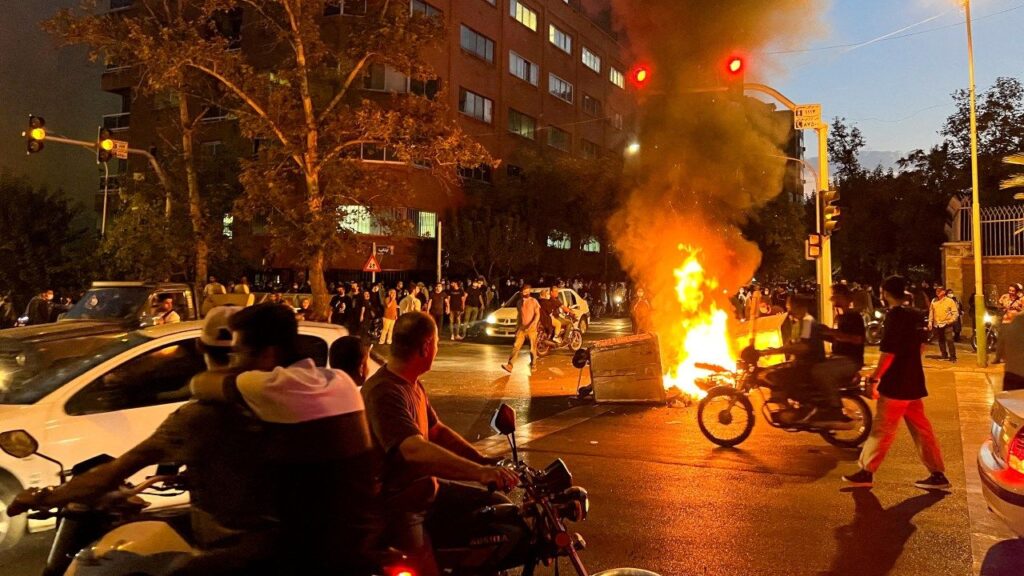Due to the persecution and injustice against the populace as well as the ferocious and repressive security campaign against the protestors, protests against the current government in Iran continue.
According to non-governmental groups, further protests against the murder of protest movement participants—whom Mesa Amini’s death sparked—took place on Thursday night.
In addition to the catchphrase “Women, Life, Freedom,” other anti-regime chants were chanted during the violently crushed protests.
In response, the protesters chanted Thursday night in a western Tehran neighbourhood, “This year is the year of blood, Mr. Ali will fall,” in reference to the supreme leader Ali Khamenei.
The number of persons slain by the security forces trying to put an end to the protest movement, meanwhile, has filled the protest movement with rage.
According to the United Nations Special Rapporteur on Human Rights in Iran, at least 250 people have died since mid-September. The latter condemned the “brutality” of the Iranian government on Thursday and demanded the creation of a “international framework” for a probe.
NGOs worry that the traditional forty-day period of mourning, which lasts forty days, will fear the first protest movement dead.
To mark the passing of forty days after Muhsa Amini’s passing, thousands of people travelled to Saqz, the Kurdistan Governorate, on Wednesday.
According to videos that were made, the events of Thursday also broke out close to Khurramabad (West), when a mass of people gathered at the grave of 16-year-old Nika Shahkrami. She passed away 40 days prior.
According to a video made by the American HRNA organisation, the protesters shouted, “I will kill, I will kill, everyone who killed my sister.”
In the context, the United Nations Human Rights Office, on Friday, expressed concern about Iran’s treatment of the detained demonstrators, and indicated that the authorities refused to release some of the dead bodies.
“We have witnessed a great deal of mistreatment.
In a news release in Geneva, Ravenna Shamdasani, a spokeswoman for the Office of the High Commissioner for Human Rights, cited a number of sources and claimed that “we are also witnessing persecution of the demonstrators’ families.”
She continued by saying that in some instances, the government will only accept or hand over the bodies of deceased protesters to their families if no burial is organised or any media interviews are conducted.
The majority of the nation is still the scene of protests and demonstrations against the killing of Misha Amini, 22, who was killed on September 16 by the Ethics Police.
Additionally, Amini, a 22-year-old Iranian of Kurdish descent, passed away on September 16 following his release under false pretences of breaking the Islamic Republic’s severe dress regulations while on a visit to Tehran with her younger brother.
Three years ago, the killing of this woman in Iran provoked unheard-of protests, which have persisted ever since and are frequently led by young girls and students who burn their veils.
Why will Iran not release the protesters’ bodies?

